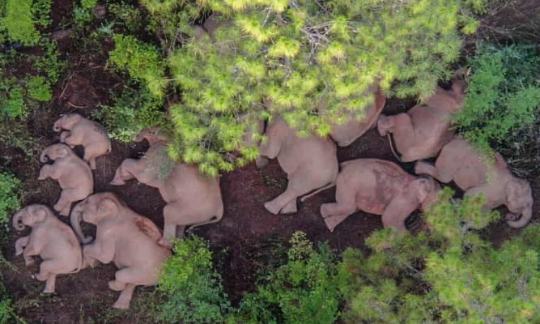Cop26 Must Not Overshadow Kunming: We Need Joint Climate and Biodiversity Goals
Ma Jun | 11 October 2021
Ecosystem collapse is as much a threat as the climate crisis, but valuing nature will help us meet both these challenges
All eyes are on Cop26 in Glasgow since the climate crisis aroused worldwide attention and compelled more than 120 countries to join the unprecedented global Race to Zero carbon-emissions campaign. But the UN biodiversity conference in Kunming, or Cop15, should not be overshadowed, as biodiversity loss is an equally grave threat to humanity.
Cop15, delayed repeatedly by the Covid-19 pandemic, will take place in two parts, online from 11 October, with more detailed discussions left for April’s meeting in Kunming, China. The conference will convene governments from around the world to agree new goals for nature for the next decade, as global biodiversity losses pose a threat to human wellbeing, affecting food, health and security, and increasing the likelihood of pandemics.
Humanity has achieved unprecedented development and prosperity over the past 50 years, with the world population more than doubling and global GDP growing from barely $3tn in 1970 to nearly $85tn in 2020. But in this time nature has suffered enormous losses, with the global populations of mammals, birds, amphibians, reptiles and fish declining by two-thirds on average, according to last year’s Living Planet report.
We must not forget nature’s vital role in climate mitigation, resilience and adaptation
We should not take biodiversity for granted from a human development perspective either. About 75% of crops depend on pollinators; approximately 75% of our fresh water comes from healthy forests; and more than half of the global population depends on nature for their livelihoods. When the Intergovernmental Science-Policy Platform on Biodiversity and Ecosystem Services concluded in 2019 that among the world’s 8 million species, 1 million of them were threatened with extinction in the next few decades, it served as a wake-up call.
While conservationists hope an ambitious global biodiversity framework can be crafted in Kunming, it is necessary to recall the lessons of Cop10 in Japan, which agreed the 20 Aichi biodiversity targets to stem the destruction of wildlife and ecosystems. More than a decade later, the world has failed to reach even one of those targets. In a more complex context of global pandemic and climate challenges, the tension between development and conservation is even more pronounced. Without sufficient attention, even if such an ambitious plan were put down on paper in Kunming, it may share the fate of the Aichi targets.
So, first and foremost, governments and societies must recognise that humanity and nature are one community with a shared future. Then we must properly value all products and services provided by biodiversity and the planet’s ecosystems. When all eyes are on the climate crisis, we must not forget nature’s vital role in climate mitigation, resilience and adaptation. As healthy ecosystems, including forests, wetlands, seas and grasslands, have served as enormous carbon sinks and helped mitigate climate change, a better way is to coordinate the two Cop processes for a synergised solution.
Despite the challenges, we see hopeful signs that the importance of biodiversity is being acknowledged and that innovative conservation solutions are being developed in different parts of the world. Costa Rica is well known for its pioneering work in restoring natural ecosystems and reviving rainforests. As the host country of Cop15, China has held up eco-civilisation as one of its fundamental socio-economic development principles. It has designated 25% of its land and territorial waters as “ecological red-line” zones and curbed the trend of eco-degradation through concrete measures such as a logging ban, returning farmland to forest and grassland, establishing national parks, controlling water pollution and a ban on fishing in the Yangtze basin.
Information technologies could serve as a gamechanger in building awareness and sharing knowledge. Global Forest Watch provides real-time mapping data for monitoring the world’s forests and unsustainable practices. Our organisation, the Institute of Public & Environmental Affairs (IPE), is working with partners to depict China’s red-line ecological zones on our Blue Map website and apps, side by side with local air and water-quality data, and the geolocation and environmental performances of 5m companies.
Over the next 10 years, we hope to see biodiversity knowledge and best conservation practices pooled to better coordinate the protection of nature with pollution control and climate actions, and to help mobilise public supervision, strengthen government regulations and enable green supply chain and responsible investment and financing.
Only such broad-based actions may bring about a transformation in society’s understanding of and relationship with biodiversity and ensure that, by 2050, the shared vision of living in harmony with nature can be fulfilled.
Ma Jun is founding director of China’s Institute of Public & Environmental Affairs.
This article was originally published on The Guardian.
Views in this article are author’s own and do not necessarily reflect CGS policy.
